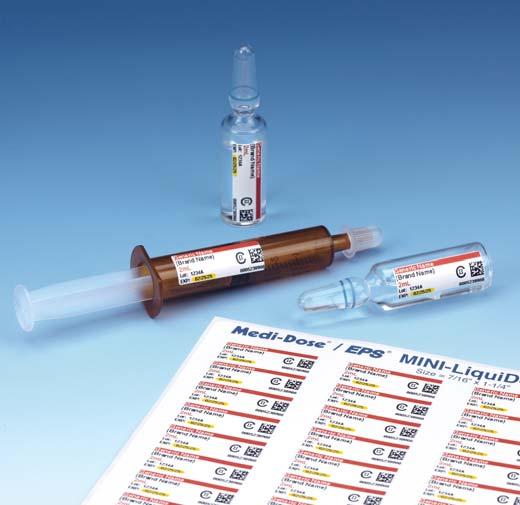
32 minute read
ISMP survey reveals gaps in compounding compliance
ISMP survey reveals major compliance gaps
56% Rate of Adherence to Sterile Compounding SOPs Is ‘Crazy’
The USP’s sterile compounding standards have been in place for nearly two decades, and most large health systems now employ technological tools to safeguard the sterile drug workflow process.
But have health systems reached the optimal level of compliance? That’s what the Institute for Safe Medication Practices (ISMP) wanted to know. So last July, ISMP launched a Pulse Check survey. More than 600 pharmacists, technicians and others allied with pharmacy responded.
The answer, detailed in survey results described at a virtual Omnicell Illuminate meeting, was that although progress in achieving compounding safety has been made, significant gaps remained.Three-fourths of respondents, for example, reported being aware of at least one pharmacy compounding error in the past 12 months, said Christina Michalek, RPh, the ISMP medication safety specialist who presented the findings. The errors ranged from incorrect dose or concentration to faulty labeling to wrong drug used (Table). Some were found and corrected before dispensing, Michalek said, while others came to light only after leaving the pharmacy.
Michalek noted that the well-documented risks of sterile compounding were not just confined to the pharmacy. “It begins with the products we decide to bring into an organization,” she said.
The risks involve when and how medications are prescribed and the processes of verification and communication, she added; they also extend to the workplace environment, the lack of standardized practices, production pressures and the absence of technology. “These are all risks,” she said.
An even more complete picture of compounding safety challenges emerged from an open-ended question that drew more than 600 responses. By far the biggest barrier, she said, “was the inability of pharmacists to accurately verify compounded sterile preparations using indirect processes like the syringe pull-back method.” Closely following was the difficulty in complying with USP General Chapter <797> and <800> standards. Rounding out the list were staff
TRUSTED SECURITY
WHEN YOU NEED IT MOST
PREP-LOCK™ TAMPER EVIDENT CAPS In times of Pandemic, trust IMI to maintain the integrity of your medications, whether Therapeutics or Vaccines.


Improve <797> compliance. Ensure the integrity of your compounds with Prep-Lock™ Tamper Evident Caps. Maintain Sterility. Evidence of access indicates the potential compromise of content sterility.
Standardize Security. Elevate your standard of care with one product to ensure drug integrity, maintain sterility, and mitigate diversion.
Contact us for Free Evaluation Samples
Table. Sterile Compounding Errors
Error
Incorrect dose or concentration
Incorrect base solution
Incorrect base solution volume
Percentage Of Mentions
58
51
43
Issue or error with labeling of CSP (including omission)
Incorrect reconstitution of drug (volume or diluent) 41
36
Incorrect drug 35
Wrong preparation technique (e.g., improper filtering, wrong tubing)
Expired drug, base solution or CSP 26
16
Wrong timing (e.g., preparing antineoplastic on wrong date) 12
Omission of a drug 5
CSP, compounded sterile preparation

training and competency issues, a lack of technology, not enough workspace and heavy workloads. Insufficient leadership support and work supervision also came under fire.
The survey also addressed technology. A total of 361 respondents (57%) reported using at least some technological tools in sterile compounding. They included barcode verification with and without images, multiple ingredient compounding devices, gravimetric verification and robotic compounding.
Delving Into Best Practices
Respondents were asked to rate the implementation level of nine ISMPdefined compounding best practices. The greatest extent of implementation (73%) related to cleanroom/sterile compounding area practices, including having enough workbenches to support only one staff member at a time per primary engineering control—laminar airflow workbench, biological safety cabinet, compounding aseptic isolator or compounding aseptic containment isolator.
The survey also focused on standard operating procedures (SOPs). Were they defined and what was the level of compliance? More than half of respondents (56%) reported that SOPs were “defined and always followed.” About one-third (34%) said they were defined and “often followed,” while 10% said they were “never, rarely or sometimes” defined and followed.
‘Alarming’ Results
Patricia C. Kienle, RPh, MPA, the director of accreditation and medication safety at Cardinal Health, found this result “pretty alarming.”
“Only 56% said always? That’s crazy,” Kienle told Pharmacy Practice News. “It shows that some people still aren’t doing what they should have been doing for decades. People need to have procedures that match what they actually do and that are compliant with USP <797> and <800> standards, state regulations and best practices.”
Kienle also said these procedures need to be in place in health-system areas “outside of the pharmacy where sterile compounds are mixed, like procedural areas, operating rooms, imaging and infusion centers—places that have been under the radar for years.
“Pharmacy supports those areas, too,” she added. “This is a team sport. It’s not limited to the silo of the pharmacy.”
Although COVID-19 appears to have played little part in the survey results, Kienle said she is worried that the COVID-19 pandemic’s practice pressures might have caused people to become “even more lax on things like certification of their areas and maintaining and really upgrading the environmental pieces” that are fundamental to USP <797> and <800> standards.
Michalek ended on an upbeat note. “Pharmacists and technicians have done some amazing work to continually improve the care and delivery of sterile injectable medication,” she said. “As stewards of medication use, they are really in the best position to move forward with more improvements and more safety around compounded sterile preparations.”
A print version of the ISMP Pulse Check survey report can be found at bit.ly/3qN37fF. —Bruce Buckley
Michalek reported no relevant fi nancial disclosures. Kienle is a member of the USP Compounding Expert Committee, but her comments are her own and not affi liated with or endorsed by USP.
0
0 0C 0
20 0C
Taking the Measure of a Leader
—Lao Tzu
learn how to perfect their actions— “what they do”—rather than being defined by their personality—“what they are.” They are built and become influential, admired and successful by their choices, actions and reactions. Their behaviors and beliefs drive the
We all have experienced good discoveries in that search is LionsLead, outcomes. leaders who we admire, as well a product development company (www. (Figure). If you see honoring the achieveas poor leaders who we don’t want to lionslead.com) that creates assessments The Assessment Model ments of others and developing leaders emulate. So, what are the desired char- to enhance productivity and growth in all LionsLead, like most personality who may never know you, then listen to acteristics that make a good leader, and areas of individual, team and organiza- and/or leadership assessment methods, and follow your heart and mind. the undesirable characteristics of poor tional development. Let’s explore some uses its own jargon and definitions, but leaders? What about me? Am I a good of the key LionsLead concepts. I will try and drill down to a few that Steps of an Assessment Tool leader? How can I know? convey the basic approach. Most professionals and leaders won-
I’ve been asking myself that last Personality and Behavior The assessments enable rich and der how they compare to the best leadquestion most of my adult life, because Your personality, your hard wiring, is meaningful conversations about topics ers. The findings from a LionsLead for most of that time, I have been fixed from an early age and reveals ten- not often measured or discussed by other assessment show how leaders coman avid student of the leadership lit- dencies toward certain competencies methods. To that end, they include 192 pare to the benchmark of extraordinary erature. In fact, I am still a learner and but is not necessarily an indicator of— attributes that lead the person taking the leaders. These findings validate the embrace that journey, because I believe nor should it be used as an excuse for— assessment through what is known as a strengths and weaknesses of assessed we never fully “arrive”; there always behavior. That’s why LionsLead assess- 5T process of transformation: leaders. The interpretation of the findare improvements to make in our lead- ments measure and modify behavior, 1. Translate – mapping competencies, ings should generate insightful and ership skills. The issue has been identi- not personality. By revealing insights to attributes, to behaviors transformational conversations with a fying the specific areas to improve. about choices, actions and reactions, 2. Truth-Telling – revealing accurate LionsLead advisor/coach. The tool is
To that end, I’ve taken many assess- individuals and teams can drive toward insights administered online and the results ment tools. The problem is they tend improvements by making small chang- 3. Trust – honoring confidence in are reported online at the LionsLead to measure personality inclinations and es in behaviors that can significantly all aspects of communication and administration website. not true leadership skills. For leadership affect outcomes. development There are a variety of LionsLead transformation to occur, I need to know The assumption underlying that 4. Testify – inspiring actions and assessments that are geared toward diff where to focus. One of assessment approach is achieving profound results ferent disciplines. My recommendation my more recent nt t that the best leaders 5. Timely – discovering now what years for pharmacy leaders is the LeadRight of observation may never provide
The Impact of Markers Of Excellence
The LionsLead assessments drive progress toward the development of self, others, teams and, ultimately, the culture of companies and entire communities. They create: Purposeful behaviors. These are behaviors that are the measured best practices of results-oriented success. They’re also the behaviors that inspire right actions and choices. Principled leaders. These are leaders whose character matters most, and who embrace what the LionsLead developers have identified as seven character traits of top-tier leaders (more on that below). Authentic culture. Culture that is real and driven by guiding principles.
The Pathway to Exceptional Leadership
Knowing what leadership is and how to acquire it can be elusive. Leading is a discipline and an art. Becoming a good leader is laudable. Being considered an extraordinary leader and a leader with strong coaching/mentoring skills creates a legacy. LionsLead uses the acronym H.E.A.R.T—a model that urges current and prospective leaders to consider a deeper and more rewarding way to lead
as

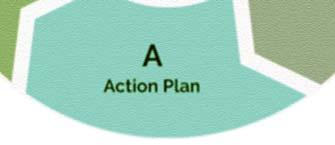
Figure. H.E.A.R.T. Model: a pathway to exceptional leadership.
“Leadership in Action” is authored by Ernest R. Anderson Jr., MS, RPh, FASHP, FMSHP, of Brockton, Mass. Mr. Anderson welcomes your input on leadership issues, at ernestanderson1130 @gmail.com.
Ernest R. Anderson Jr., MS, RPh, FASHP, FMSHP
3 Steps To Personal Transformation
1Learning, through a LionsLead assessment, the behavioral changes needed to be a successful leader.
2Building new neural pathways (neuroplasticity) necessary to sustain new effective behaviors.
3Achieving an instinctive, effortless practice of new behaviors aligned with your heart, mind and soul.
Note: To achieve the transformation, these changes often require a coach to assess, motivate, provide consistent feedback and encourage deep, profound self-reflection.


members to fulfill all of the key roles. In some cases, an individual could fulfill multiple roles in their areas of strength. If all members of a team take the LeadRight tool, not only can one look at the best roles for team members to play, but one can look at the strengths and weaknesses of the entire team across the entire set of competencies.
Based on this overview, hopefully you’ll appreciate that LionsLead can be a powerful leadership measurement tool. In fact, it’s validated by at least two statistical methods: the use of Cronbach scores, which measure an assessment's internal consistency, and item response theory, which determines the relevant strengths of each assessment statement and helps to ensure accuracy.
Next month, we will explore specifics of the LeadRight tool and how you might be able to use it to assess the competencies and attributes of your team members. ■
Assessment Instrument, which consists of 315 statements to answer, generally multiple choice. Administration of the online assessment takes 90 to 120 minutes. The LionsLead advisor schedules a 90-minute confidential debrief with the leader to review the findings and develop a plan based on the results. A follow-up assessment is administered to measure progress, usually six months to one year later.


LeadRight Report Overview
Results of the LeadRight assessment comprise specific, applicable competencies, represented by multiple attributes from the focused instrument and measured by associated behaviors. The report consists of seven competencies and 27 attributes. The seven LeadRight assessment competencies are:
1. Self Leadership 2. Leadership Essentials 3. Getting Things Done 4. Leading Others 5. Composure 6. Candidness 7. Personal Values Factor
Another output of the assessment tool is the strengths that you would bring to a team. There are seven team roles that high-functioning teams must possess, as derived from the team role model of Meredith Belbin, PhD (bit.ly/ 39YSv6m). The team roles as defined by Belbin are: 1. Coordinator – creates the way team effort is applied. 2. Shaper – influences the way teams function. 3. Plant – advances new ideas and strategies. 4. Monitor – carefully evaluates ideas and suggestions. 5. Resource Investigator – explores and reports on ideas. 6. Team Worker – plays a supportive role filling gaps.
7. Complementor/Implementor
– brings strong tactical focus and execution.
The tool results identify a primary and secondary role and grades the participant’s ability in all roles as fair, good and strong. Ideally, your team will include enough well-matched






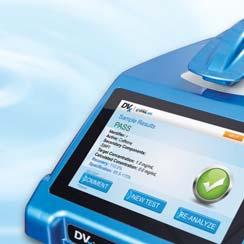

Hospitals Hone COVID-19 Vaccine Cold Chain Strategies
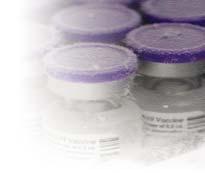
Hospitals are key participants in COVID-19 vaccine distribution. But the facilities still face many challenges, including storage of vaccines at compliant temperatures, unpredictable deliveries and, most recently, a shortage of specialized syringes needed to stretch doses of the Pfizer-BioNTech vaccine.
Through it all, pharmacists are adjusting workflow to ensure the Pfizer and Moderna vaccines are administered as efficiently as possible.
Northwell Health, a network of 23 hospitals and nearly 800 outpatient facilities in New York, is a case in point. “We don’t know week to week what we’ll get,” said Onisis Stefas, PharmD, MBA, Northwell’s vice president and chief pharmacy officer. “It comes in dribs and drabs. Once the vaccine arrives, we send emails to invite prioritized employees [high-risk health care workers so far] to be vaccinated at their hospital of choice. We do get emails less than 48 hours ahead of time from the New York State Department of Health, and they tend to be accurate, but that’s still not a lot of time to prepare.”
Flexibility is key in such situations, Stefas noted. “We ramp up when we have vaccines, and ramp down when we don’t,” he said, adding that such adjustments have to be made rapidly after deliveries fall short of expectations. In one recent example, New York state had been receiving 300,000 doses a week from the federal government to administer to 7 million eligible people. But in mid-January, it unexpectedly received only 250,000 doses, and health care providers had to abruptly cancel thousands of appointments. “It doesn’t matter how much vaccine you order because states allocate based on their own formulas,” Stefas said.
Cold chain logistics is another moving target. “Hospitals that invested in ultracold freezers were more likely to get Pfizer vaccines first,” Stefas said. “So, we purchased ultracold freezers to add to a few we already had in research labs; our current total of 19 raises our storage capacity to 2 million doses across our health system.” As a result, “every Northwell hospital getting shipments of the Pfizer vaccine has an ultracold freezer to receive and store them.”
CDC Requirements
The CDC requires every vaccine storage unit to have a temperature-monitoring device and a facility to document its daily minimum and maximum readings for regulatory compliance. To ensure compliance, Stefas said Northwell’s vaccination ramp-up included: • adding more sensors for its new ultracold freezers, which it integrated into an automated temperature monitoring system already in place; • adding electrical upgrades for the ultracold freezers; • collaborating with facilities, engineering and information technology to strategically position its vaccine storage units and ensure that monitoring and alert systems work well; and • establishing an inoculation reservations and scheduling system.
But no amount of technology can make up for poor planning and prioritizing, Stefas stressed. To that end, Northwell’s pharmacy and other internal stakeholders created an algorithm that prioritized employees for inoculation, based on several factors, Stefas said: “Do the employees work in an ED or ICU? Where do they practice geographically and what is the COVID-19 prevalence there? How much patient interaction do they have? What is their age?” As vaccines came in, he added, “we were able to release invites to our highest-risk health care workers.”
One key is to know how many people are scheduled to be vaccinated daily and where the vaccinations will take place in the hospital. Armed with that information, the night before, the Northwell pharmacy department places




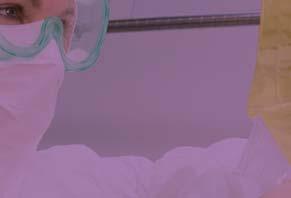








High-alert medication carries high risk. And for the patients who need essential Parenteral Nutrition treatment options, every one of our more than 1.7 million annual, custom-compounded PN solutions undergo critical double-checks by CAPS® pharmacists.
As the nation’s largest network of outsourcing admixture pharmacies and the market leader in the compounding of Parenteral Nutrition, we understand that safety is your highest priority.
Contact your local CAPS representative to learn more.
an appropriate number of vaccines in the refrigerator to thaw. In the early morning, pharmacy reconstitutes and labels the vaccines in compliance with Pfizer’s safe six-hour-use window (Moderna is good for up to 30 days in the refrigerator; see Table), and delivers them to the vaccine administration site leader. Pharmacy connects with the vaccination team throughout the day “to ensure they have enough product, and to ensure we didn’t prepare too much and waste any,” Stefas said.
To ensure cold chain compliance, Northwell also trained staff to thermally protect, reconstitute and draw up the vaccines with online education and competency tests everyone had to pass.

Anna Legreid Dopp, PharmD, ASHP’s senior director of clinical guidelines and quality improvement, stressed that pharmacists have been a huge help in managing the storage-to-inoculation process, “thanks to a lot of deliberate planning.” In the case of the Pfizer vaccine, “hospitals are being strategic about timing once it is taken out of the freezer and thawed,” she said. “When thawed and ready, dedicated team members help with diluting the Pfizer vaccine, drawing it into syringes and prepping for administration. [This] is done with an eye on the clock and detailed labeling for the beyond use date/time.” (For more details on safe dilution of COVID-19 vaccines, see sidebar, “Beware Potential Errors.”)
Legreid Dopp added that many ASHP members use a hub-and-spoke model for administering vaccines, in which a health system centrally receives bulk thermal shipments of vaccines (Pfizer, 975 vials; Moderna, 100 vials) it then has to thermally protect, break down and redistribute for use at multiple vaccination sites. “This is where manufacturers’ thermal shippers come in handy … to transport vaccine from locations with an ultracold freezer to those without,” she said.
Pfizer noted that its shippers can serve as temporary storage units for up to 30 days, as long as they’re refilled with dry ice every five days. That can be a boon for smaller hospitals that may not have the resources to invest in ultracold freezers, noted Rafik Bishara, PhD, the chair of the Parenteral Drug Association’s Pharmaceutical Cold Chain Interest Group.
Bishara also suggested that smaller and rural sites consolidate. “Mass vaccinations may be the best we can do in some areas if they don’t have equipment,” he said. “Maybe set up a local high school arena as a vaccination center with a mobile freezer. Or coordinate with a small hospital in the next city, if they have equipment to properly store vaccines at the recommended temperature.”
Whatever COVID-19 vaccination strategies are used, Bishara stressed the importance of having health-system pharmacists involved. “I fear patient compliance rates [will be adversely affected] if people feel good after the first injection and don’t come back for the second. So, hospital pharmacists have a major new role to educate themselves, nurses, doctors and technicians to reinforce the importance of taking the two required shots. That said, let’s also hope that a one-shot vaccine will be developed shortly.” —Al Heller
Vaccine and Manufacturer Storage and Handling Requirements
Pfizer/BioNTech • Vaccine will arrive at between –80° and –60° C (–112° to –76° F) in a thermal shipping container with dry ice. • Use the thermal shipping container for temporary storage only; replenish dry ice pellets within 24 hours of delivery and every 5 days thereafter. • Store in an ultracold freezer within above temperatures; continuously record temperatures with a digital data logger and ultracold probe. • Document daily minimum and maximum temperatures. • Before mixing, thaw in refrigerator for up to 120 hours at 2° to 8° C (36° to 46° F). • 25 to 195 vials may take 2 to 3 days to thaw; fewer number of vials will take less time.
Moderna • Store frozen in original cartons between –25° and –15° C (–13° to 5° F). • Check and record daily temperatures, including minimum and maximum. • Do not store on dry ice or below –40° C (–40° F). • Vials can be stored refrigerated between 2° and 8° C (36° to 46° F) for up to 30 days before first use. Unpunctured vials may be stored between 8° and 25° C (46° to 77° F) for up to 12 hours. • After first dose is withdrawn, hold vial between 2° and 25° C (36° to 77° F) for no longer than 6 hours. • Do not refreeze.
Johnson & Johnson (Ad26.COV2.S) (FDA EUA expected 2/2021)a
Oxford-AstraZeneca (AZD1222) (Not likely to receive FDA authorization until April 2021) a • Store for up to two years at –20° C (–4° F), up to three months at 2° to 8° C (36° to 46° F).
• Store, transport and handle at normal refrigerated conditions of 2° to 8° C (36° to 46° F) for at least 6 months.
EUA, emergency use authorization a Projected market entry based on ASHP COVID-19 Vaccine Candidates Table (bit.ly/2Mak30G). Sources: Pfizer/BioNTech: bit.ly/36ldCiu; Moderna: bit.ly/36epKBL; Johnson & Johnson: bit.ly/2Mak30G Oxford/AstraZeneca: bit.ly/3iMFG3j
Beware Potential Errors
When it comes to safety, vaccines are no different from drugs: Potential adverse reactions need to be accounted for, according to Rafik Bishara, PhD, the chair of the Parenteral Drug Association’s Pharmaceutical Cold Chain Interest Group. To that end, hospitals should heed recently published examples of COVID-19 vaccination errors and develop action plans for avoiding such errors at their own facilities, Bishara noted.
The Institute for Safe Medication Practices (ISMP), for example, published an article, “Learning from Errors with the New COVID-19 Vaccines,” on Jan. 14 that detailed several voluntarily reported mishaps, including four dilution errors involving the Pfizer COVID-19 vaccine (bit.ly/3t0VTX6). In one of the cases, an inadequate volume of diluent (approximately 1 mL) was added to the vaccine vial. Before the error was discovered, a 60-year-old patient received a nearly twofold overdose in his first vaccine dosing. The patient had no initial reaction to the overdose and was discharged after an hour, with follow-up calls planned for the next 48 hours. According to the ISMP report, clinic staff called a Pfizer representative to determine if the patient’s second vaccine dose should be altered, “but no immediate guidance was offered.”
The ISMP report also noted that several hospitals are having difficulty obtaining the specialized syringes needed to handle the low volumes involved in diluting and/or extracting the Pfizer and Moderna COVID-19 vaccines. “We [have] learned that Operation Warp Speed, the federal COVID-19 vaccine response, has been shipping out a variety of syringe types since vaccinations began, some of which are not low dead-volume syringes and, thus, not efficient enough to extract more than five doses from the Pfizer-BioNTech vaccine or more than 10 doses from the Moderna vaccine vials,” the report stated.
The authors added some guidance on the type of syringe and technique needed to avoid problems: “While the number of doses withdrawn from a vial is influenced by the health care worker’s technique, using a syringe designed to limit the dead space between the syringe hub and needle reduces the amount of wasted vaccine and increases the ability to extract an extra dose(s) from COVID-19 vaccine vials.”
Asked to comment on the syringe/dilution issue, Michael Ganio, PharmD, the senior director of pharmacy practice and quality at ASHP, noted that there is some room for flexibility. “More than one device or combination of syringes and needles have sufficient low dead space to extract the sixth or even seventh dose,” he said. “Some low-deadspace devices have needles already affixed to the syringe, but some combinations of individual syringes and needles may also result in low dead space.
“In some cases, it may not be necessary to withdraw every dose using a low-dead-space syringe; using a combination of three low-dead-space syringes and three standard syringes can help optimize the use of low-dead-space syringes,” he said.
Ganio added that “ASHP is working with industry and government stakeholders to develop resources to help guide pharmacists in optimizing the amount of vaccine doses.”
—David Bronstein, Al Heller
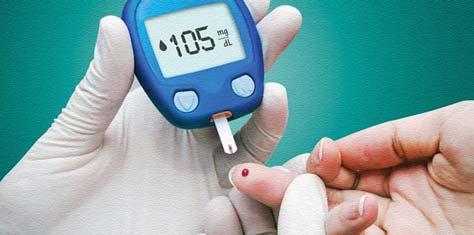
Millions in Cost Savings
continued from page 1
June 2020, said Jon Knezevich, PharmD, the hospital’s diabetes stewardship pharmacist (abstract BP-4). “This translates to an estimated cumulative length of stay reduction of 0.46 days and greater than $690,000 in cost avoidance annually, along with an additional $150,000 in cost savings from formulary management strategies,” he said. Some of those savings, he noted, were due to reducing/streamlining insulin analog formulations on the inpatient formulary, and incorporating multiuse insulin vials into the nursing workflow to diminish waste.
UNMC launched the diabetes stewardship position in January 2016, hiring Knezevich as its first steward. One of the biggest challenges Knezevich said he found was trying to quickly and effectively identify, triage and intervene in real time when patients experienced fluctuations in blood sugar or were treated with a non–evidence-based insulin regimen. He worked with the information technology department to develop a novel dashboard, constructed using the hospital’s electronic health record system (EPIC), to provide real-time surveillance of glycemic fluctuations among patients hospital-wide, and collaborated with team-based rounding pharmacists to promote evidence-based glycemic recommendations and provide timely interventions from a central location. (For more success with dashboards, see article on page 26.)
Knezevich also developed and disseminated an acute glycemic management credentialing competency in the winter of 2017, after he couldn’t find any commercially available programs. The module reviews organizational policies, protocols and workflows; provides guidance with transition of nonformulary agents; and offers recommendations for dealing with special populations, such as transplant patients, those on the labor and delivery unit and those with steroidassociated hyperglycemia.
The module empowers clinical pharmacists to take an increasing role in monitoring and managing patients receiving insulin therapies, he said.
“Many health care organizations are finding it difficult to address the increasingly acute medical needs of the growing diabetic patient population they serve,” Knezevich added. “Given the unique skill sets and diverse knowledge [of our] profession, pharmacists can serve as the leaders championing change and delivering interventions to improve patient care. Much of the outcome-related success our institution has experienced is the result of an empowered clinical pharmacy team.”
The stewardship model is easily translatable to other organizations with broad patient populations where high-risk medications are warranted, he noted. Examples could include anticoagulation stewardship, pain stewardship and geriatric stewardship.
Removing IV Acetaminophen: $450K Savings
Taking IV acetaminophen off the formulary at Memorial Medical Center, in Springfield, Ill., helped the pharmacy save an estimated $600,000, without adversely affecting clinical outcomes, Kayla DuBois, PharmD, MBA, and her colleagues showed (abstract P-9 ).
The medical center had been spending nearly $600,000 per year for IV acetaminophen, largely driven by surgical patients, said DuBois, a clinical pharmacist at the facility. The drug had been offered to reduce opioid consumption and was available in many perioperative order sets and enhanced recovery after surgery protocols. However, increasing evidence demonstrated that the IV form of acetaminophen was not better than the oral form (Am J Health Syst Pharm 2018;75[6]:367-375), DuBois said, and an in-house medication use evaluation in 2019 found opioids continued to be used at higher levels than benchmarked. Specifically, IV fentanyl use was greater than 1.25 times that of similar size teaching hospitals, while hydrocodone-acetaminophen and acetaminophen-codeine were used over 2.8 times more, tramadol was used over 2.3 times more, and oxycodone ER was used over 1.7 times more, she said.
DuBois presented these results to the Pharmacy and Therapeutics Committee, surgical department heads and other key players. Subsequently, they put in place a plan to remove IV acetaminophen from the formulary and order sets as of June 2019. Order sets were updated to include appropriate alternatives, such as oral or rectal acetaminophen, oral nonsteroidal antiinflammatory drugs and adjunctive non-
opioid analgesics such as orphenadrine and gabapentin. Education on alternative analgesics was provided to pharmacists, physicians and other clinical staff through targeted live education sessions, email communication, educational slides and a newsletter.
Next, DuBois and her colleagues looked at clinical and financial outcomes before and after removing the drug. They checked use of morphine, hydromorphone and fentanyl, as well as hospital lengths of stay and drug costs. In particular, the team evaluated metrics among eight diagnostic groups associated with higher use of IV acetaminophen: major chest procedures, major small and large bowel procedures, gastrointestinal obstruction, esophagitis, spinal fusion, nonmalignant uterine procedures, cesarean delivery, and septicemia or severe sepsis. Any use of more than one standard opioid dose (morphine 2 mg, hydromorphone 1 mg, fentanyl 50 mcg) was deemed clinically relevant.
The team found only three instances of significant increases in opioid use after IV acetaminophen was removed, all for fentanyl for gastrointestinal obstruction, esophagitis and nonmalignant uterine procedures. In addition, significant reductions were observed, including an approximately 8 mg decrease in morphine for small and large bowel procedures and for gastrointestinal obstruction, DuBois said. Changes in length of stay related to IV acetaminophen removal varied, including up to 14.5 fewer hours for gastrointestinal obstruction and up to 7.5 additional hours for major small and large bowel procedures. These changes could be attributed to several factors, DuBois said, including changes in prescribers and prescribing habits, and alternative opioid delivery methods. Cumulative savings from July 2019 through March 2020 (the study period) found drug savings reached $450,000; projected savings through 2020 were $610,780.
Taking IV acetaminophen off the formulary had “widespread impact,” DuBois said, “which required the pharmacy department to [deliver] a very strong argument to high users of this drug. We had to come forward with undisputable evidence that alternative oral agents were appropriate and effective.” DuBois also reiterated the importance of her team’s “extensive education rollout program house-wide, with pharmacists in particular getting education so they would have the foundational knowledge to be able to defend the removal as well as the opportunity to offer alternatives.”
Although generic IV acetaminophen is available, this did not change the hospital’s view on using it, DuBois said. “Literature evidence still supports there is no benefit over oral administration, and the cost of generic IV dosage forms still far exceeds that of oral tablet, oral liquid and rectal dosage forms.”
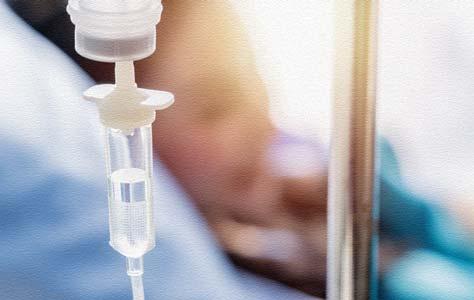

Punting a PBM Saves $1.19 Million
Involving pharmacy stakeholders and selecting a pharmacy benefit manager (PBM) that offered a superior employee prescription benefit helped Kalispell Regional Medical Center, in Montana, save $1.19 million in the first year of its switch, according to another study (abstract P-6) presented at the ASHP annual meeting.
Historically, selection of PBMs was handled by the human resources department, without the pharmacy’s participation, said Hugh Easley, PharmD, the director of pharmacy services. But in 2016, hospital administrators asked the pharmacy for help managing employee prescription costs in its self-funded plan, which at the time were $94.93 per member per month (PMPM). The hospital’s contracted PBM had set up barriers to pharmacy’s access to line-item prescription details to save money. After participating in a process improvement network collaborative, HR leadership formally requested that their health insurer’s PBM vendor provide line-item prescription details, such as medication costs, pharmacy dispensing fees, PBM administrative fees and rebates shared. They submitted these data to their group purchasing organization insurance consulting team for an external market competitive review.
The consultants compared this information with other third-party PBMs to identify a best fit with the medical center’s existing formulary, copay structure and employee benefit philosophy. Easley and his pharmacy colleagues offered guidance toward selection of the new PBM partner, which manages employee eligibility and provides a complete set of administrative data, including rebate management and claims-denial appeal processes, and optional free and fee-based clinical services focused on employee wellness. In the first year alone, the switch resulted in a 17% reduction in costs—to $78.82 PMPM—yielding an estimated total savings of $1.19 million.
Most of the PMPM savings were achieved by in-sourcing pharmacy services and maximizing the purchase of preferred generics and tier 1 formulary drugs. The health system also rewarded employees by lowering out-of-pocket expenses if they used entity-owned pharmacies and educated them on the cost savings in this self-funded plan.
Easley and his team also made plan design changes with their PBM related to specialty medications. Although these previously were handled through an outsourced mail-order pharmacy, the health system brought the medications back to their own in-house pharmacy to lower costs and improve convenience for employee patients.
Easley encouraged health systems with self-funded pharmacy benefit plans “to contract with a third-party PBM that is committed to price transparency and employ a business model with practices more closely aligned with the health system, to ensure cost savings will benefit their employees and dependents.”
Harnessing PGY-1 Residents: $398K Return on Investment
Using PGY-1 pharmacy residents’ time and keen insights in developing cost savings initiatives yielded Baylor University Medical Center, in Dallas, a nearly $400,000 return on investment (ROI) in fiscal year 2019. This was enough to more than support the implementation of two PGY-2 pharmacy residency programs in hematology/oncology and solid organ transplantation, investigators reported (abstract P-4).
“As the financial landscape of health care changes, we are tasked to reduce costs to meet shrinking financial margins while continuing to maintain quality in an ever-expanding patient care environment,” said Allison Bass, PharmD, BCOP, the hospital’s director of the PGY-2 oncology residency program. “Pharmacy departments have the potential to play a significant role in identifying creative ways to meet patient care needs, expand services and capitalize on cost savings.”
Bass and her team developed a pilot program in which a PGY-1 pharmacy resident led daily coverage of the abdominal transplant and hematology/oncology services. During a 15-day pilot in the hematology/oncology service, the residents documented 169 interventions, such as providing antibiotic stewardship or alternatives to high-cost chemotherapy. Sixtynine of these interventions saved more than $20,000. During a four-week pilot in the abdominal transplant service, the residents documented 213 interventions, including IVIG and antibiotic stewardship efforts, with the latter yielding a reduction in antibiotic treatment by at least 44 patient-days. Residents also acted as record-keepers, logging 43 notes on transplant pharmacists’ clinical interventions during eight kidney/liver selection committee meetings. Such documentation complies with standards for transplant center accreditation from the Centers for Medicare & Medicaid Services and United Network for Organ Sharing.
Additional successes included more than $68,000 saved via formulary adherence and alternative therapy recommendations. Some of those recommendations came out of a resident-led drug information on-call pager program, where clinicians and pharmacy staff could consult residents using the call pager service during busy off-hours. High-impact interventions included recommendations for costeffective alternatives to agents such as isoproterenol, and for minimizing doses of high-cost antidotes such as digoxin immune Fab through more consistent use of toxic drug level assessments.
Residents also spearheaded medication use evaluations (MUEs). One focused on ensuring that thresholds of crystalloid administration were met before albumin was ordered for cardio thoracic surgery patients. MUEs achieved $430,000 in potential annual savings, Bass noted. Additionally, costs were reduced by more than $175,000 by using two residents in lieu of two pharmacists, he noted.
The team estimated an ROI of $398,007 during the first year of the transplant residencies. Upon presentation of these results to senior leadership, the pharmacy received funding for PGY-2 solid organ and PGY-2 oncology residencies. Both programs started last July, with residents recruited from their PGY-1 year.
“Implementing residencies can be an effective way for pharmacies to increase quality and improve affordability of care for the patients we serve,” Bass said. “Our model offers a path to leverage the impact of PGY-1 pharmacy residents to justify the expansion of services through PGY-2 residency programs.”


—Karen Blum
The sources reported no relevant fi nancial disclosures.

